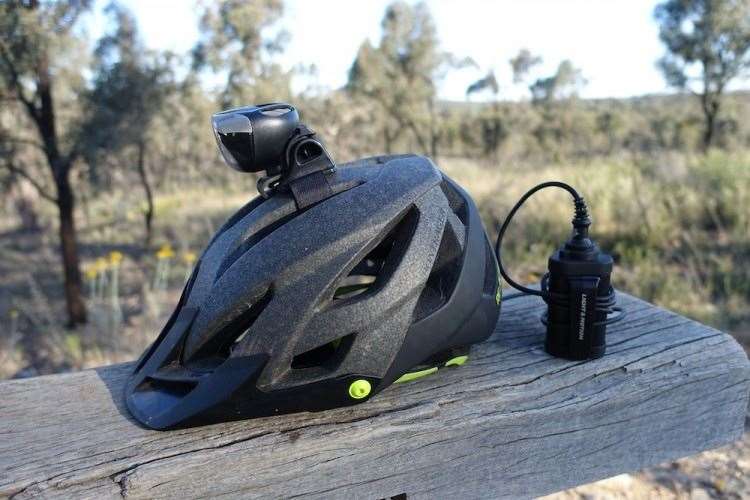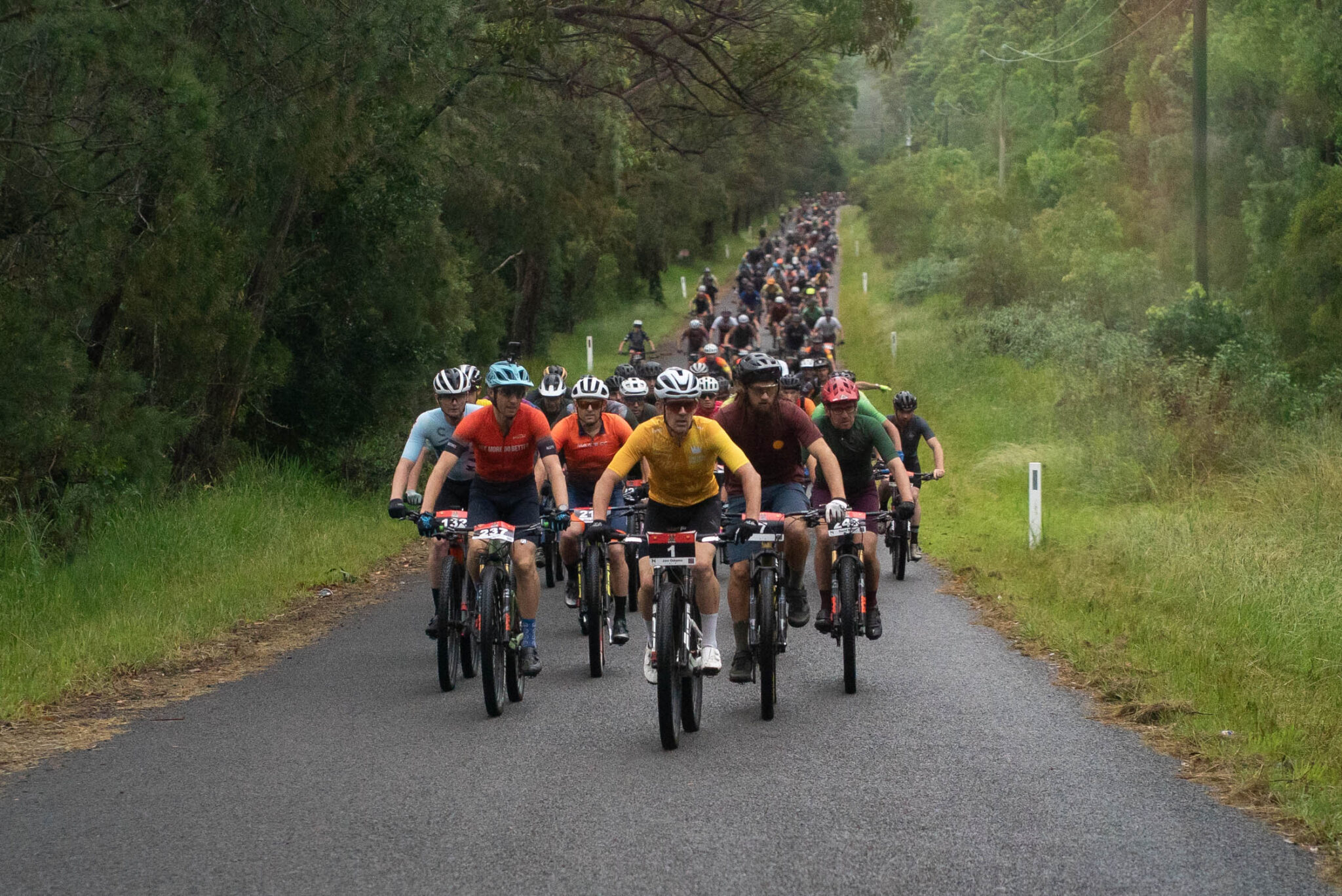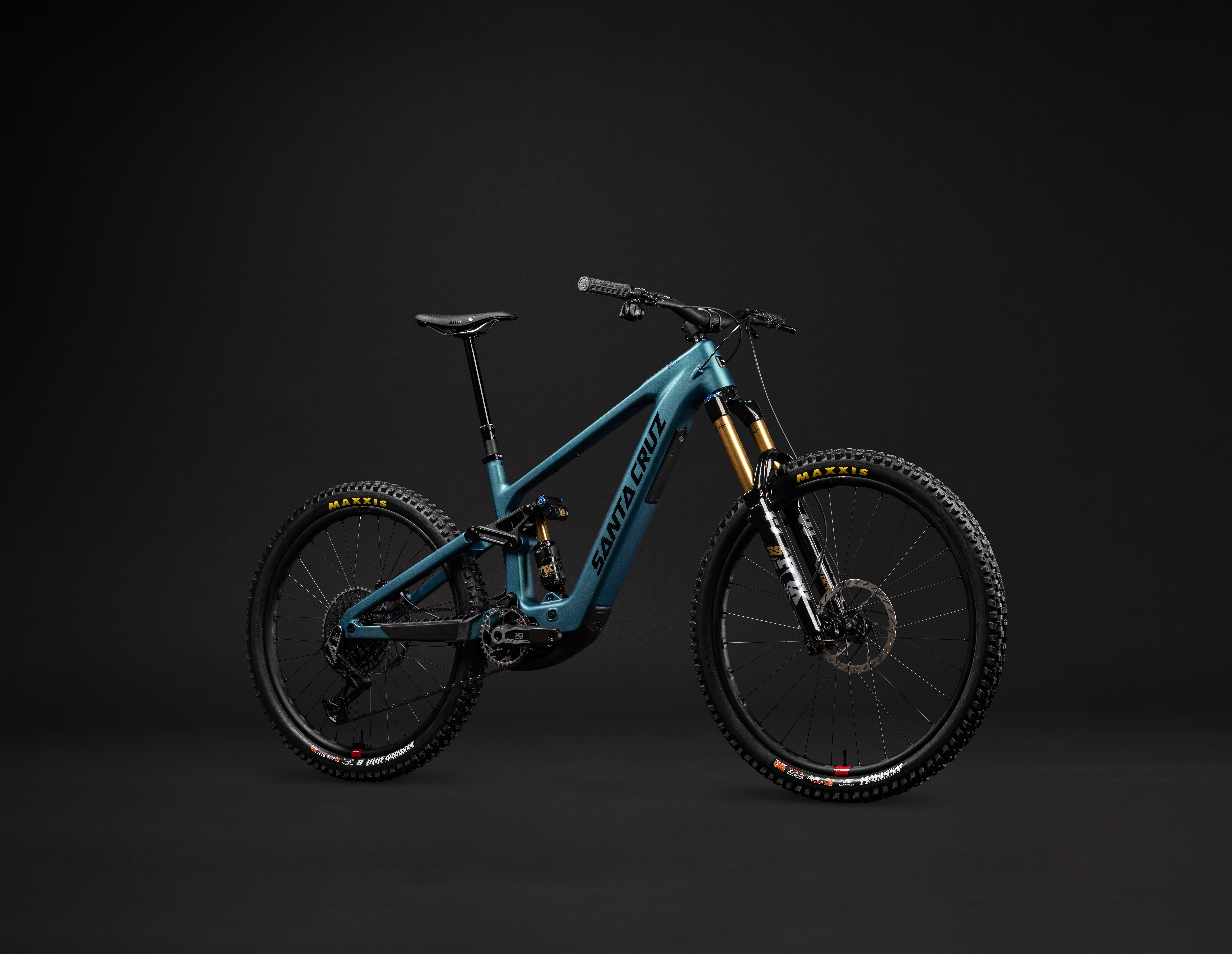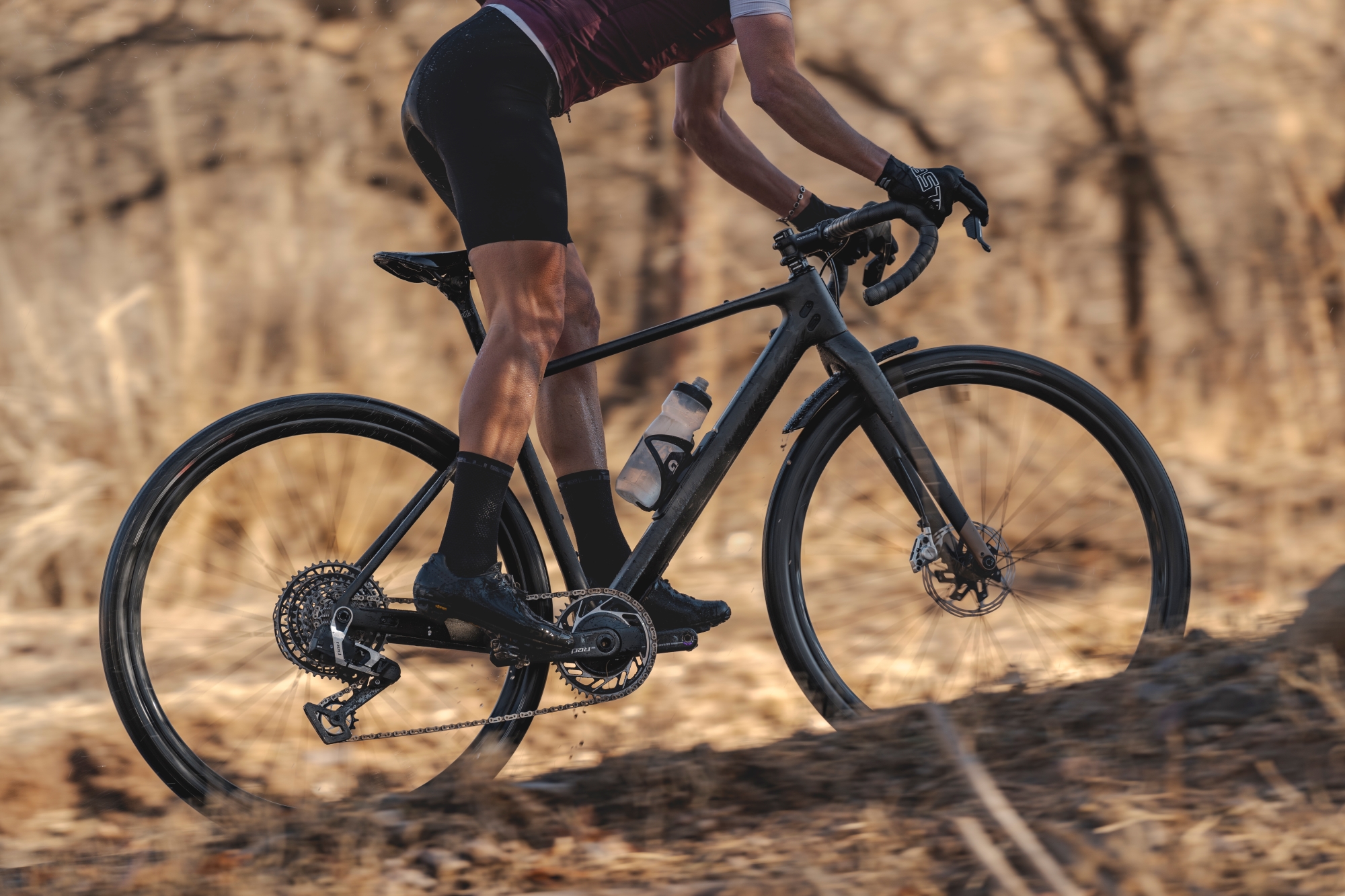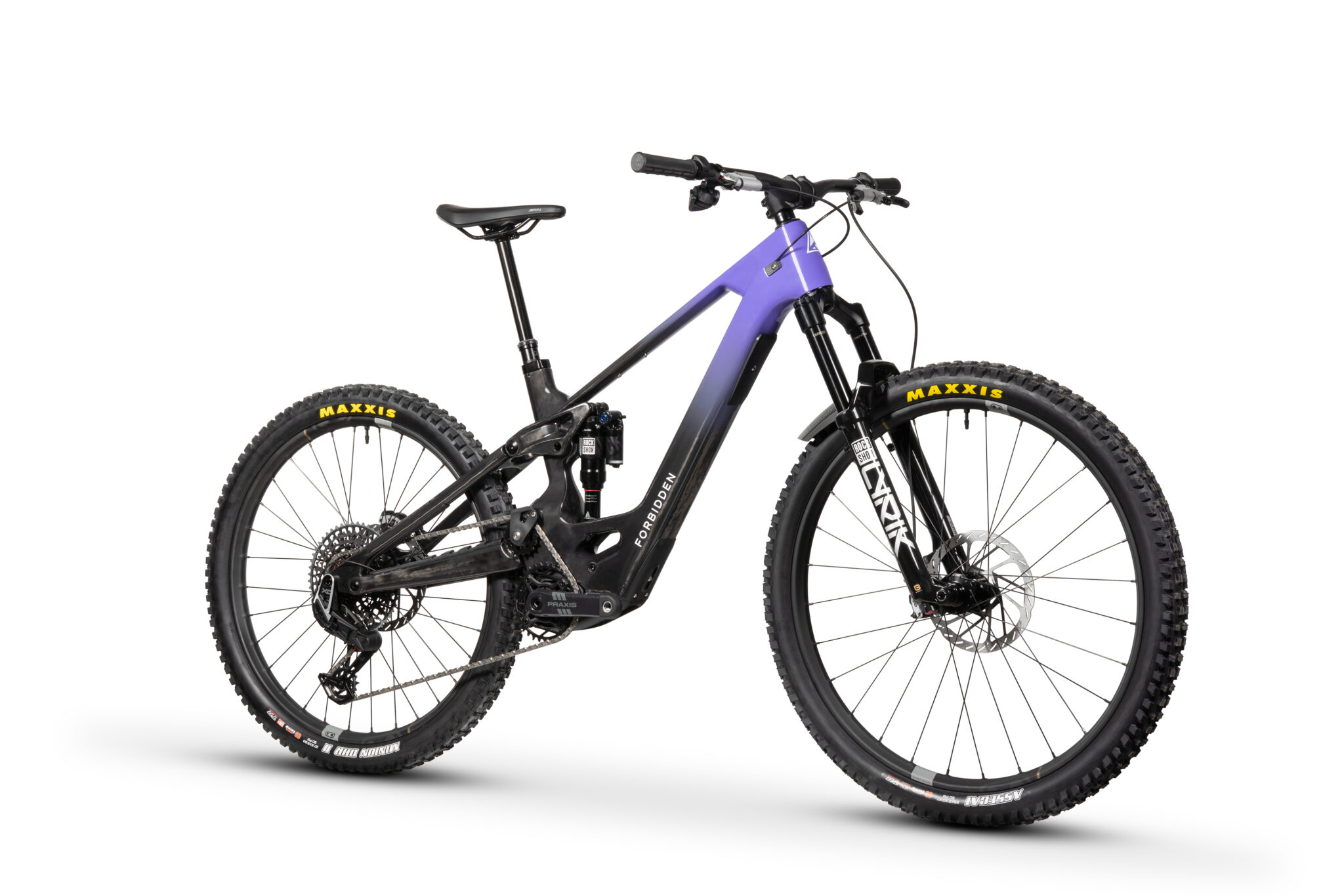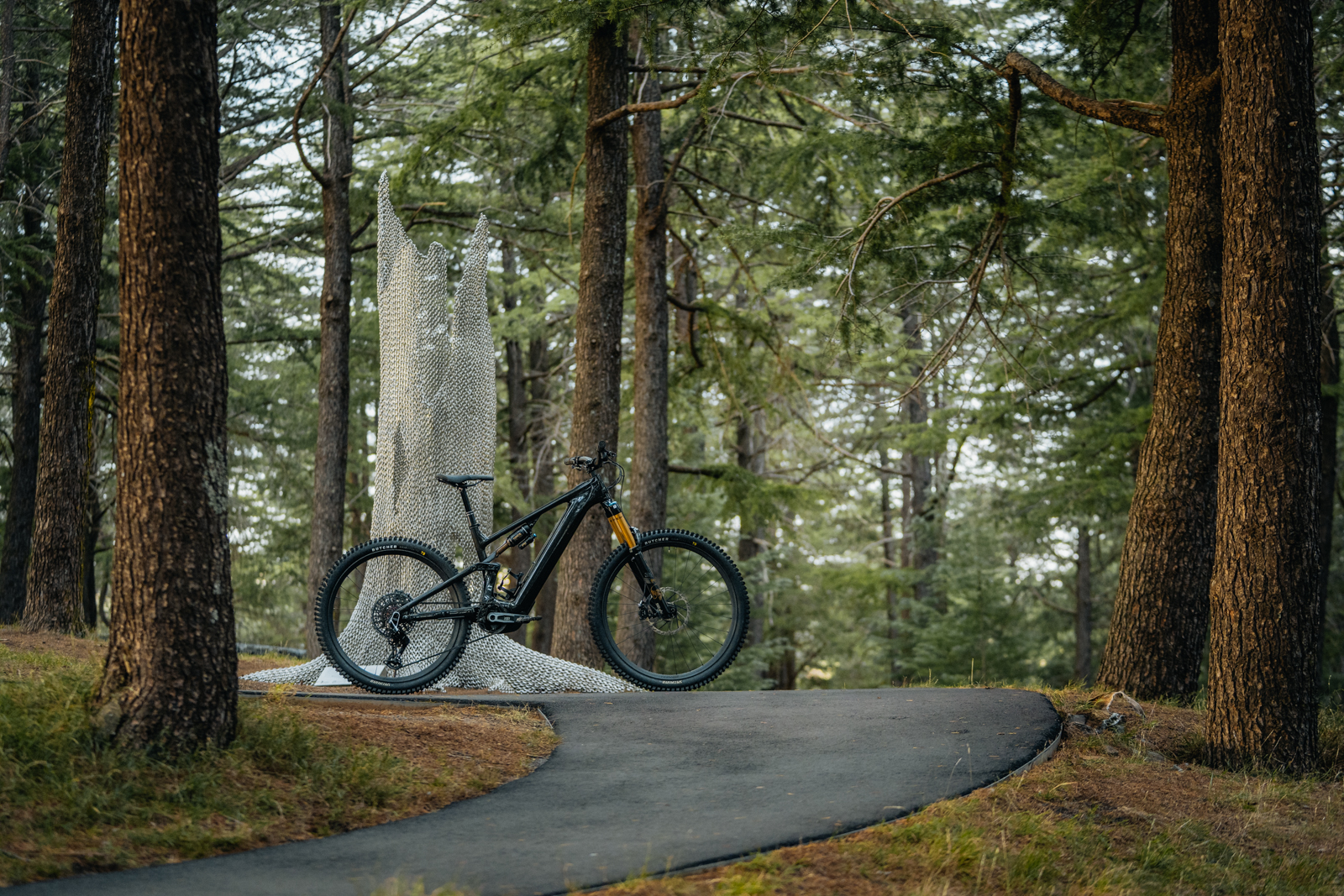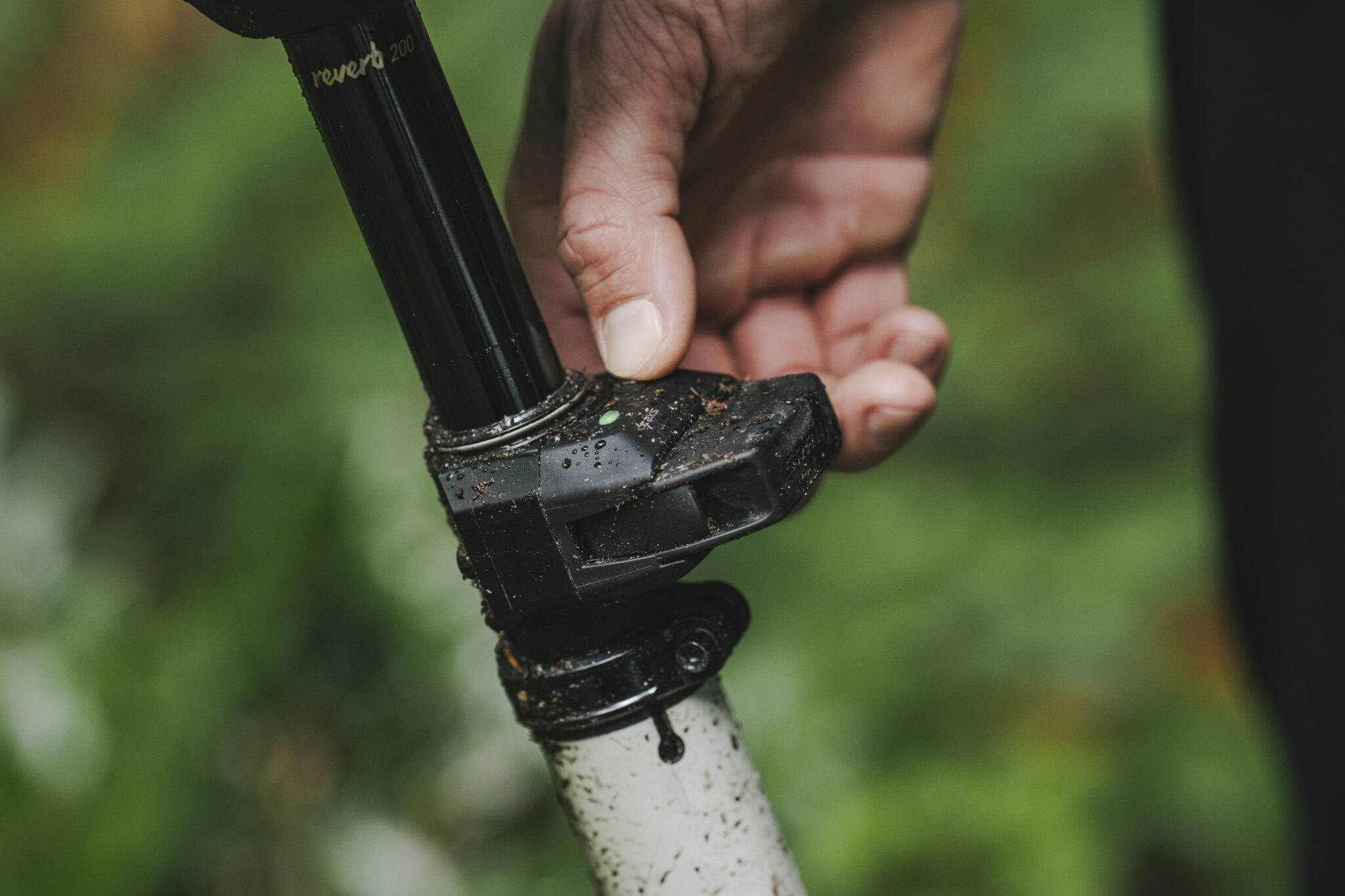TESTED: Light & Motion Seca 2000 Race
As many cyclists will attest to, riding at night is one of the most exhilarating parts of mountain biking.
As many cyclists will attest to, riding at night is one of the most exhilarating parts of mountain biking. It’s difficult to put into words, but the thrill that comes from following that piercing tunnel of light through the darkness is truly like nothing else. Your watering eyes may be able to read the trail surface in front of your tyres, but outside of that small circle of light? That’s anybody’s guess. There’s an added air of apprehension and excitement, and the resulting adrenalin is both utterly unique highly addictive. Even the regular trails that you might ride on a daily basis can suddenly become a whole new experience when ridden in the dark.
Unlike any other component or accessory, a night-light truly opens up a whole new array of riding opportunities. And as far as upgrades go, it’s a pretty cheap way to access more trails, over more parts of the day. In winter, it’s almost a necessity for mid-week riding, while in summer, night riding is a great way to escape the daytime heat. That aside, it’s just pure and simple fun.
Many of us here at AMB have been riding with night-lights for a long time, right from those early days of heavy sealed-lead acid batteries and piddly halogen globes. In more recent years, the substantial progression of lighting technology has seen LED lights improve the game, making lighting systems more accessible to more riders. Power is increasing, battery run times are improving, and system sizes are decreasing. Much of this has to do with LED manufacturing giant CREE having established a manufacturing plant in China. As a result, budget Chinese-made lights have flooded both the Internet and local bike stores, forcing those existing brands to sharpen their game in the wake of falling entry prices. It’s an exciting time for consumers, but it’s a tumultuous one for the industry, as the pace of technical improvements continues to accelerate year-to-year. And so what was once a cutting edge race system three years ago, is now considered heavy, underpowered, and too bulky by today’s standards.

One brand that has been in the lighting game since the very beginning is Light & Motion. They’re one of the few companies that are still manufacturing in the US, while many of their competitors have gone offshore. However, Light & Motion see their small-scale manufacturing as an advantage rather than a disadvantage. They have an intense focus on R&D and in-house testing, and they’re all about producing a high quality product that delivers the number of lumens that it says on the tin (something that isn’t always the case with other lights out there). And because of Light & Motion’s in-house manufacturing, they’re able to more readily adapt to new technologies and implement running improvements during a product’s development and manufacturing cycle. There’s no need for the engineers to wait 2 months for a shipment to arrive to try a new LED or a new firmware update – they just walk over to the production line from their design office and talk to the people assembling the lights. As you can imagine, Light & Motion has witnessed a lot of changes over the 20 years that they’ve been in business, and it’s this experience and the companies adaptability that they believe gives them an edge over their Far East competitors.
Back in Issue #147 of AMB Magazine, I reviewed the high-powered Seca 1500 from Light & Motion. After 18 months of testing, I came away impressed with the Seca’s overall power, smooth beam pattern, and longterm reliability. Shortly after that review was published, I was contacted by the Australian distributor for Light & Motion, Jet Black Products, to see if we’d be interested in testing the more powerful sibling to the Seca 1500. Would the extra 500 Lumens be worth the extra coin? Well that’s what I’ve been trying to work out over the past few months as I’ve gotten to know the new Seca 2000 light.
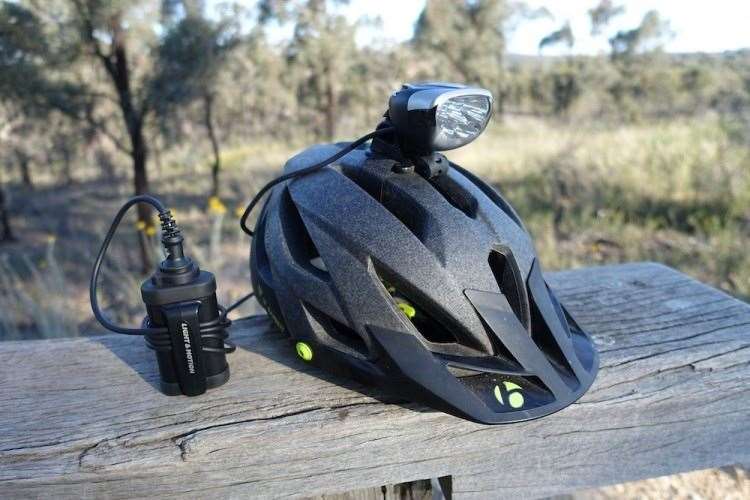
“The ultimate light for night-riding, the Seca delivers an unparalleled level of quality, performance, and reliability. Custom optics harness the power of a 6 LED array using the best parts available to throw a beautifully controlled beam pattern. Discreet fin cooling system ensures that the light delivers a consistent level of light output through the duration of the run-time. Certified to the FL-1 Standard, the Seca is an engineering marvel that remains far ahead of the competition.” – Light & Motion
The Seca 2000 Race Light features:
- 2000 Lumen Output certified to the FL-1 Standard
- A 6 LED array using the best CREE LEDs and enhanced firmware
- Custom engineered bi-conic reflector optimizes the light to provide a smooth, even beam pattern with a wide, far-reaching spread of light that focuses the light where you need it.
- Battery: Race 3 Cell Lithium-Ion Rechargeable
- Lumens: 2000 (High), 1100 (Medium), 575 (Low)
- Run Time: 1.5 hours (High), 3 hours (Medium), 6 hours (Low)
- Charge Time: 2.5 hours
- Claimed System Weight: 343 grams
- Includes: Handlebar mount/helmet mount, battery strap, Mini L 1.5 Charger & zippered bag
- RRP: $649
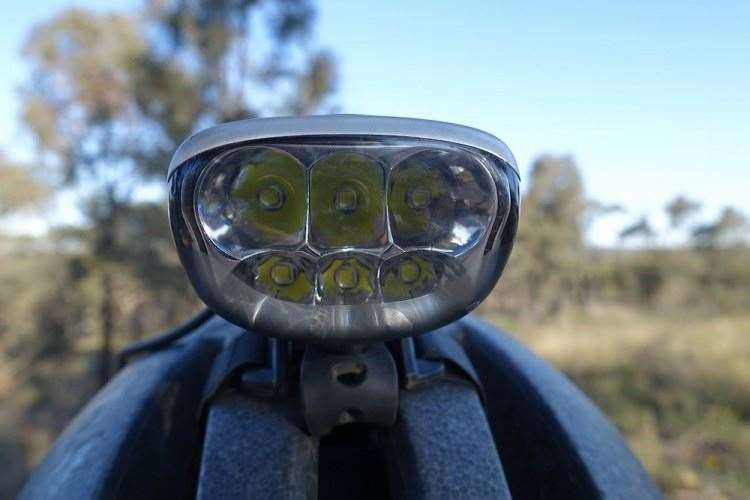
First Impressions
The Seca (pronounced “Seeker”) is the big daddy of Light & Motion’s range. It’ll likely be a familiar sight to most mountain bikers, as it’s overall profile has largely remained unchanged for the 7 or so years that it’s been in the L&M lineup. However, there are many changes lurking beneath the bonnet that have turned the new Seca into the high-powered cannon it is today. The current 2016 model features 6 high-powered LEDs to deliver over 2000 Lumens of lighting power, with a customised biconic lens reflector to help deliver a smooth beam pattern on the trail. Like the rest of the new 2016 range, L&M have concentrated on internal improvements as oppose to implementing drastic changes to their already trail-proven designs. As such, the Seca updated hardware and firmware help to keep the LED’s running cool, while also increasing efficiency for longer burn times.

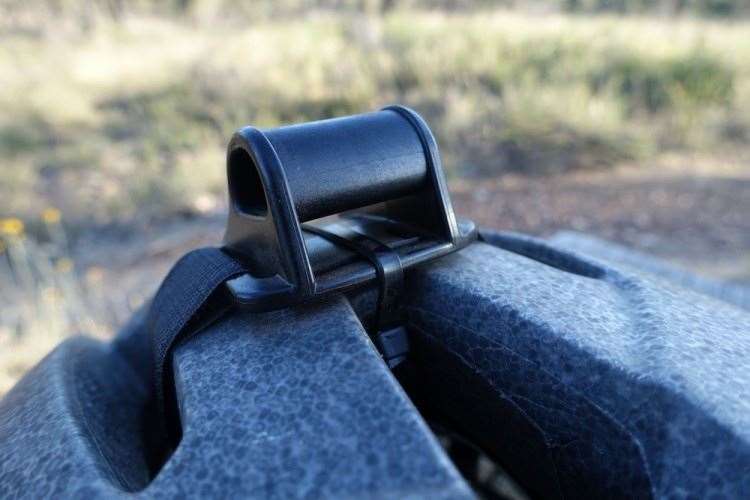
The Seca is designed to mount immediately to your handlebars, though it will also fit onto your helmet via the included helmet mount and a single Velcro strap. In my experience however, no matter how snugly you tighten down on the Velcro strap, there is always some added fore/aft movement with the bracket. The addition of a cable tie helps to anchor the bracket more securely to reduce flex, but it obviously reduces the ease of which the bracket can be removed from the helmet. Lucky for me, I have a helmet specifically setup for night riding, so I don’t have to dick about with taking brackets on and off. On the note of helmets, mountain bike specific lids typically have a flatter surface on top that makes for a more stable mounting base for a night light or POV camera. Road helmets are often more shapely in their grooves and ridges, which makes them more of a pain the bum when it comes to fitting a night light. Not impossible necessarily, but it’s worth noting if you’re considering a new helmet and you’re looking to mount a light to it.
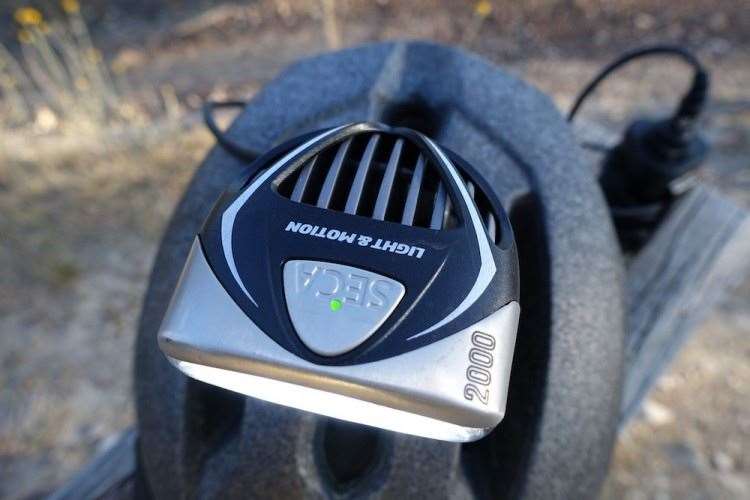
The Seca 2000 light body features a hybrid construction, with both alloy and resin panels employed to deliver a strong but lightweight unit. The back half of the light is essentially hollow, with heatsink fins sticking out to catch more airflow to keep the LED’s running cooler. Confirmed weight for the head unit is just 130 grams, making it a very light choice to fit to your helmet. As long as you can get it roughly centred in the middle of your helmet, you’ll barely notice it’s weight on top of your head. A single button on top of the light body is all you need to turn it on, and tapping the large button delivers a definitive “click” to help you negotiate through its settings. There are High (2000 Lumens), Medium (1100 Lumens), Low (575 Lumens) and Pulse settings to choose from, and a short hold of the button turns the light off. In the middle of the large silver button is a small illuminated LED that’ll tell you how much battery life you have left. This LED changes from green (50-100% charge), Amber (25-50% charge), Red (10-25% charge), and then Flashing Red (0-10% charge). This indicator is more useful if you’re using the Seca on the handlebars where you can see the coloured LED, but it’s still welcome. In addition to the indicator, the light will emit a flash every 3 minutes once you’re down to 5-10% charge.
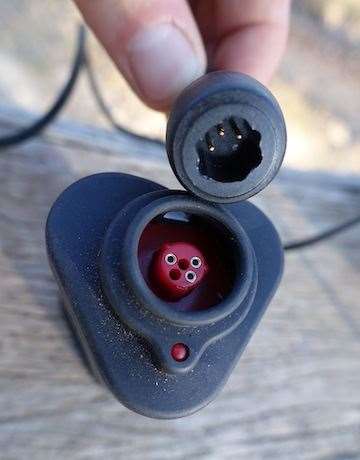

L&M’s battery packs have also remained largely unchanged from an external standpoint. The connectors are carried forward, providing backwards compatibility with many of their older lights. The connector plug is one of the best in the business, with a snug rubber outer ring providing a watertight seal between the battery and the cord. Simply line up the arrow on the connector plug with the red button on the battery, and press the plug down through the rubber seal. There’s a satisfying ‘squish’ as the rubber seal closes down over the plug, and you’ll have to give the connector a good tug to remove it. In all my years testing L&M’s light sets, I have never once had the cord come unstuck by itself, which is more than I can say for many other lights I’ve ridden with. Inside the plastic case are 3 Lithium Ion cells to create what L&M refer to as the ‘Race’ battery. The Seca 2000 is also available in an Enduro model, which uses the 6-Cell ‘Enduro’ battery for double the run time. Both batteries are available aftermarket should you wish to back yourself up for a longer ride in the woods. Replacement 3-Cell Race battery sells for $149, while 6-Cell Enduro batteries go for $219.
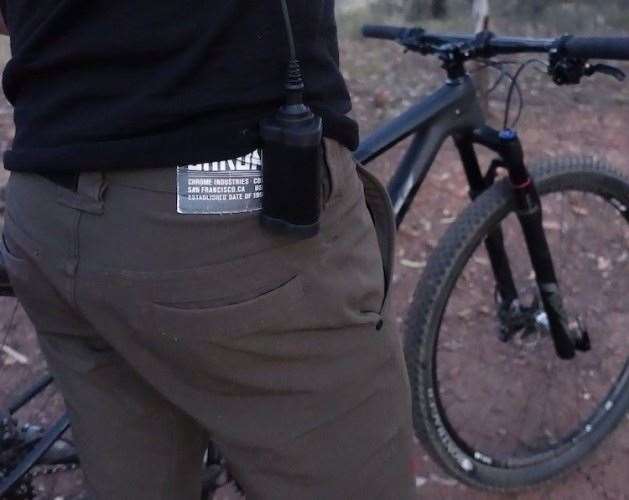
If your riding jersey doesn’t have any pockets, the battery pack also features an integrated belt clip that makes it super easy to attach to the waistband of your shorts. This is perfect for mid-week after work rides, when I’m usually wearing a T-shirt and only riding with a water bottle. Of course the compact Race battery will tuck neatly into a jersey pocket or a hydration backpack, and there’s plenty of cord length to do so.
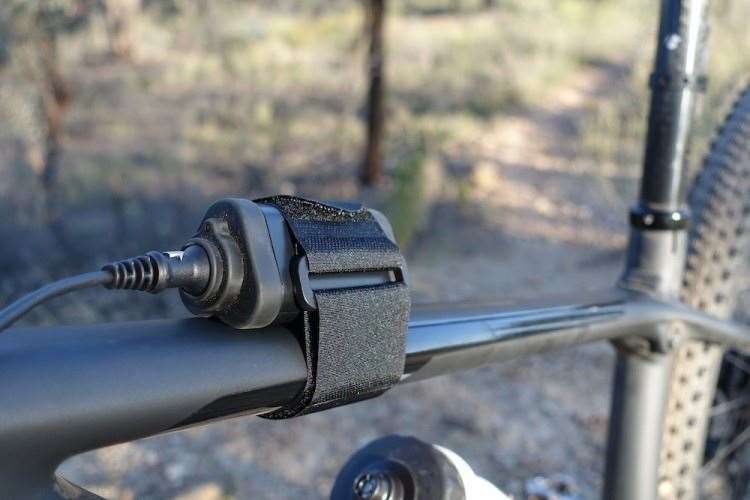
If you’re running the Seca on your handlebars, the battery is profiled to mount onto your bike’s top/down tube with a large Velcro strap that’s included in the box. It’s easy to get the strap nice and tight, and I never had any issues with the battery banging about on the bike or working its way loose.
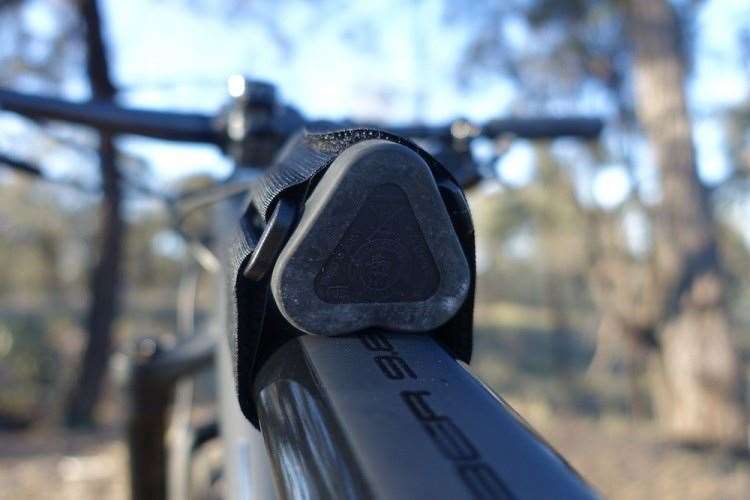
Rubber end caps on the battery pack make for less clanging about and less chance of leaving damage to your frames paintwork. As you can see in the above photo, the battery pack is also narrow enough to be unnoticeable by your knees whilst riding.

The Seca head unit mounts directly to your handlebar via a large rubber strap. Simply tighten the strap, and secure via the plastic tab on the base of the head unit. The Seca sits low down on the bars due to its rearward-facing mounting base.
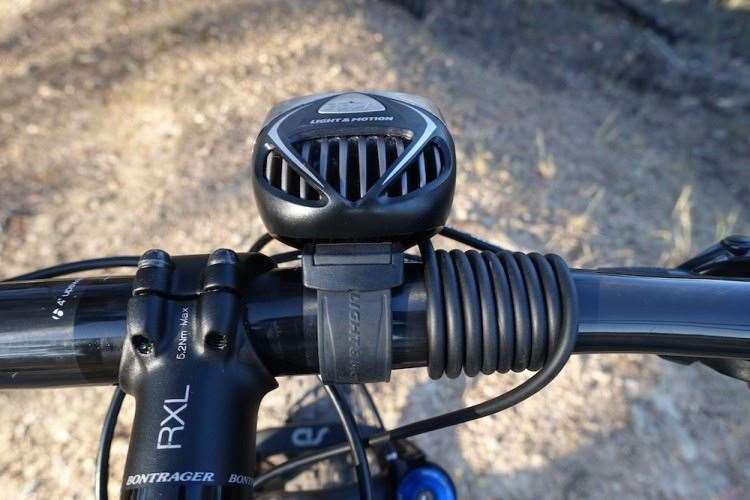
While the lengthy cable offers flexibility when helmet-mounted and riding with the battery in your jersey pocket, it does become tricky to manage with the light bar-mounted. I found that coiling the cable around the bars was the neatest solution, but it would be nice to see a shorter cable option with this in mind.

On The Trail
Although the 2000 Lumens figure is impressive (and accurate), the Seca isn’t just a powerful light. The large head unit features a bi-conic lens reflector, which sees the 3 upper LED’s focused into a tighter spot beam, with the 3 lower LED’s directing out a softer and wider spread of light. You’ll also notice that the Seca’s lens uses a curved profile, rather than a flat lens like most other lights have. The result is a very smooth diamond-shaped beam pattern that offers up excellent usability on the trail. Unlike many other lights that deliver a more concentrated ‘hot spot’, the Seca offers a broader flood pattern that helps to illuminate obstacles on either side of the trail, while also delivering better visibility right in front of your wheel. Compared to other LED lights that punch out a very ‘white’ light, I did notice that the Seca delivers a warmer colour that is easier on the eyes. Sure, there are brighter lights available on the market, but with the Seca it appears to be more about quality over quantity.
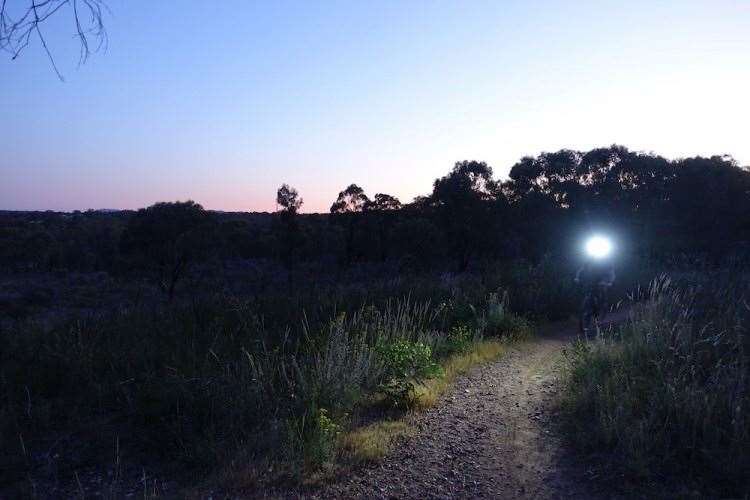
I typically made use of the Seca 2000 as a solo head light, where its lightweight and broad beam pattern made for a fantastic all-in-one setup. Much of my night riding is carried out during the week, where our rides usually last for 2-3 hours depending on the route. For the most part, I could leave the Seca 2000 on full power for the entire time. Although the claimed runtime is just 1.5 hours on the High setting, the Seca is clever enough to manage its power output to give you further burn time when you start getting low. Around that 1.5 hour mark, the light begins to automatically step down its power to eek out the remaining juice, and in most cases, I got around 2.5 hours of burn time, without ever having to touch a button. Of course that last hour you’ll be running on a lower power setting, which isn’t ideal if the riding is fast and technical. So depending on what sort of ride you’re heading out on, there are a couple of different ways to manage the 3-Cell battery’s run time. You can toggle between the power modes to only use the High setting for faster downhill sections, or if you’re more of a set-and-forget rider, just leave the light in Medium, where the 1100 Lumens of power will provide plenty of light for a solid 3 hours. Also worth noting is the Seca’s ‘Race Mode’. Simply hold the button for 2 seconds when turning it on to engage ‘Race Mode’, which limits you to just High and Low power settings. This is ideal for longer night rides and 12/24 hour racing, where you can manually flick the light into the Low setting for long fire road climbs and open sections where you might not need so much power. It also removes the Pulse setting from the equation, so you don’t accidentally end up on disco-mode while you’re in the heat of the moment.

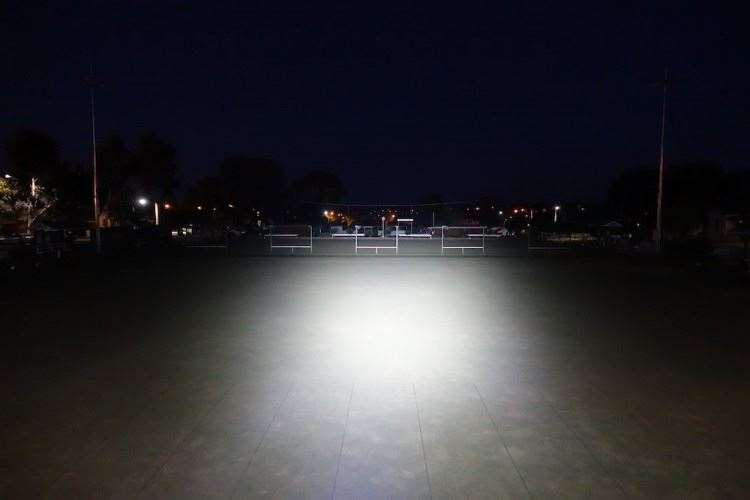
As I mentioned previously, the strength of the Seca is in the quality of its light output and its smooth beam pattern. While it’s hard to quantify, there’s something to be said for the amount of strain placed on your eyes when you’re riding with a light that has a very intense spot beam and a quick step down to the outer edges of the beam pattern. Having a bright light is great, but if your eyes are constantly adjusting between an intense white light and pitch black darkness around it, it can be quite mentally fatiguing. Instead, the Seca delivers a much fuller and more even spread of light across its output, which should be relatively clear in the above photo example. On the left is the 2000-Lumen Seca, and on the right is the 2200 Lumen (claimed) Gloworm XS. Despite having similar outputs, the beam pattern is quite different between the two, with the Gloworm having a much more focussed spot beam, with less available light around the edges. I will admit that many other lights I’ve tested exhibit a similar type of beam pattern to the Gloworm, though many more are narrower again – particularly Magicshine lights, which have a terrible hot spot and a patchy beam pattern. I believe this to be the case, because most consumers are typically drawn to a light by its Lumens rating, and not necessarily by the quality of the beam pattern. Of course it is much easier to deliver a huge amount of Lumens in a narrow spot beam, than it is to deliver that same power across a wider flood beam pattern. Think of a laser; you could have a 6000-Lumen laser on your handlebars, but it’s not going to give you a whole lot of usable light on the trail.
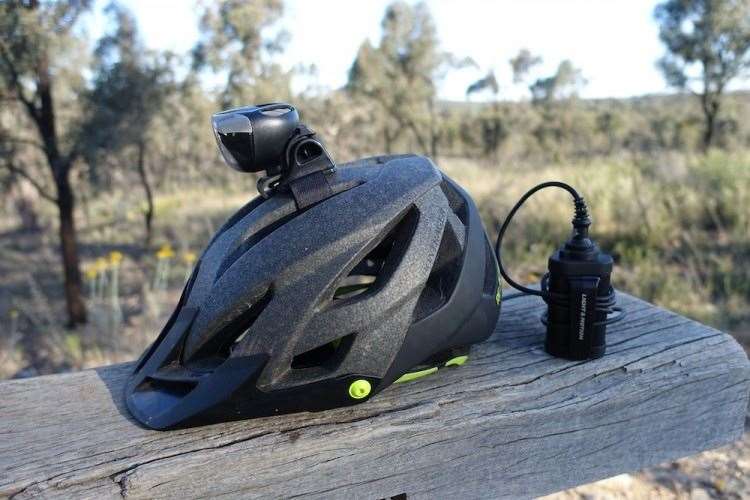
The Verdict
As with the Light & Motion Seca 1500, the Seca 2000 Race has proven to be durable, reliable and a welcome partner on the trail when the sun heads down. It’s extra power output is noticeable on the trail, particularly when you’re entering narrower singletrack at faster speeds. It’s easy to use, and I’m a big fan of the Race Mode setting to help you toggle between the High and Low settings to get more run time out of the compact Lithium-Ion battery. If you’re looking for more burn, the L&M Seca 2000 Enduro sells for $739, and while the battery is heavier and bulkier, it does up the run times significantly.
That said, the Seca 2000 Race is an ideal do-it-all light set that you can utilise for both handlebar or helmet mounting. It’s lasted me well on the trail, and with L&M backing it up with a 2-year warranty behind their Californian manufacturing, I have no qualms in recommending it to riders who are looking to invest in a high quality lighting option. Further support comes from the availability of spare batteries, helmet mounts, and retention straps, while L&M also offers a service to carry out repairs on old lights too. If you’ve had issues with cheap Chinese lights failing you out in the bush, or with dodgy connectors mysteriously unplugging themselves on the trail, then you’ll know the value of the saying; “Buy Quality, Buy Once”. And that is certainly the case here.
Jet Black Products
Website: www.jetblackproducts.com
Email: info@jetblackproducts.com
Phone: (02) 4560 1200

